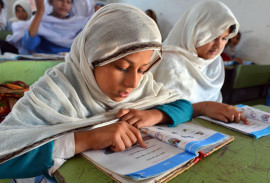
The MDGs provided a compelling framework to address the needs of the world’s poorest people. Yet, they have not encompassed all the issues. The international community faces a very different set of development challenges at the outset of the post-2015 era. The new agenda will be implemented in the context of the growing interdependence of countries and global development action. Globalisation and interdependence have opened up remarkable opportunities for development but also extraordinary needs, given that many people have been excluded from their positive impacts. In addition, the world has seen food, energy, financial, health and environmental challenges across countries in the past decade, amplifying global systemic risks. Integrating environmental sustainability into development priorities such as poverty reduction, health, energy, sustainable livelihoods and food and water security will influence a fundamental change in development and growth. The linkages among environmental and human development issues, particularly poverty and environment, are well understood and can be viewed from several perspectives. The viewpoint on poverty and environment linkages has shifted from recognising that they exist to providing integrated development solutions.
To capture the linkages between poverty and environment, the former needs to be viewed multi-dimensionally in a way that takes into account deprivation of resources for survival, livelihoods and wellbeing. The challenge is to ensure that environmental sustainability is factored into improving the lives of the poor, which entails that necessities like food, water, energy, sanitation, education, healthcare, housing and security are provided in an environmentally sustainable manner. This highlights the notion that poverty eradication is not a precondition for environmental sustainability; hence, it is imperative that the two must advance simultaneously. However, policies and approaches to providing immediate basic needs often fail to minimise their impact on the environment. This has put development on an unsustainable trajectory. Therefore, getting this linkage right will be the ‘make or break’ issue of the post-2015 agenda.
The assumptions regarding linkages between poverty and environmental degradation must be challenged. Though poverty may force people to take desperate measures to eke out a living, the statement that ‘poverty is the greatest pollutant’ needs to be refuted. Many examples, experiences and initiatives of poor communities can be cited, which were built on traditional knowledge, land stewardship and technology in order to identify solutions for environmental sustainability.
The poor are often the most vulnerable to environmental degradation, and inequalities continue to deepen as a result. For example, the contribution of the poor to greenhouse gas emissions is relatively minimal, yet they stand to suffer the most from the consequences of climate change. Apart from increasing population numbers, the rapid movement of people due to unplanned urbanisation is a major factor that is entrenching conditions of poverty, environmental degradation and unhealthy lifestyles. Given that two-thirds of the global population will live in cities by 2050, the post-2015 framework should ensure sustainable and healthy urban environments and include action on slum improvements. Additional elements for consideration should include action on sustainable transport and urban living, including clean air and green spaces.
Sustainable agriculture and food security have been identified as critical challenges for the post-2015 agenda, particularly in the face of a growing world population and increasing per capita food production. Food production is often environmentally destructive, causing groundwater depletion, topsoil loss, greenhouse gas emissions, pollution from fertilisers and pesticides, loss of habitat and declining biodiversity. Food stocks today could feed all seven billion people on Earth, but much of it is being wasted and food distribution is uneven. These challenges must be addressed by pursuing an environmentally sustainable intensification of agriculture, particularly among smallholder farmers, and through investments to battle climate change, which would drastically reduce losses in the food production chain.
Published in The Express Tribune, June 23rd, 2015.
Like Opinion & Editorial on Facebook, follow @ETOpEd on Twitter to receive all updates on all our daily pieces.






































COMMENTS
Comments are moderated and generally will be posted if they are on-topic and not abusive.
For more information, please see our Comments FAQ